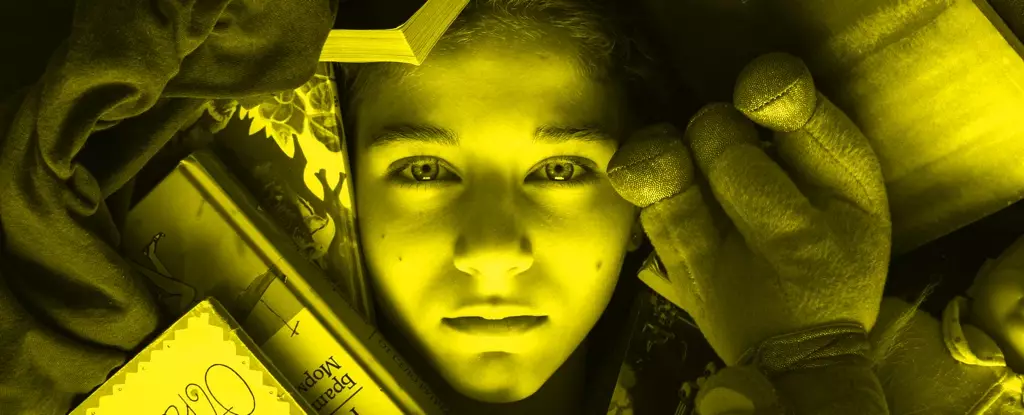The act of sorting through belongings can be both a sentimental and daunting experience. Recently, while helping my mother sift through boxes left by my late grandparents, we unearthed a collection labeled humorously as “toothpick holders and other treasures.” Ironically, toothpick holders were nowhere to be found. This serendipitous discovery led us to an array of relics that sparked memories long hidden away, culminating in a maze of nostalgia and reflection—a puzzle piece stood out, evoking memories of my grandmother’s trademark practice of secretly stashing the final pieces of her jigsaw puzzles, only to make a grand reveal at the end.
As the hours wore on, we found ourselves discarding 90% of the things that once seemed precious but had lost their relevance. This experience aligns with a common refrain I hear from friends and patients alike: “Why did I keep this?” As a licensed clinical psychologist with a focus on hoarding disorder, particularly among the elderly, the question brings up multifaceted discussions about attachment, decision-making, and our relationships with our possessions.
Hoarding disorder transcends mere clutter; it is characterized by an overwhelming compulsion to save items, to the extent that it can severely disrupt daily functioning. Within my clinical practice, I often work with individuals who exhibit varying degrees of this condition. While some may meet the stringent criteria for hoarding disorder, many grapple with clutter that doesn’t reach clinical severity yet still impacts their well-being.
Age appears to play a critical role in this phenomenon. As individuals grow older, cognitive factors such as executive functioning—responsible for decision-making—begin to decline. This deterioration can exacerbate tendencies to hold on to items for sentimental or potential future usefulness, elegantly illustrating the complex interplay of age and mental health in the accumulation of clutter.
Traditional theories of hoarding suggest that decision-making distress drives the inability to discard items. However, recent research conducted during my graduate studies challenged this assumption. When I engaged older adults with hoarding disorder in a sorting exercise, the results revealed a surprising pattern: older participants averaged lower distress levels when deciding what to keep or throw away, with many even expressing positive emotions throughout the process.
This suggests a reassuring narrative—that for some older adults, the struggle with clutter is not solely about fear of loss but may be more deeply tied to emotional connections and responsibilities towards the items themselves. Anecdotes like “I need this to go to a good home” reflect an altruistic mindset that often complicates their relationship with possessions. The emotional landscape of hoarding, particularly in older adults, is nuanced, suggesting a need for deeper understanding rather than simplified analysis.
Recent findings underscore the importance of values-based approaches when addressing clutter. In a 2024 study, my team employed motivational interviewing techniques to assist older adults grappling with hoarding conditions. By guiding these individuals through the consideration of their personal values—an often overlooked aspect in decluttering—we observed significant reductions in clutter, alongside enhanced positive emotions.
Values dictate countless choices in our lives, shaping what we wish to retain or relinquish. Perhaps the most profound realization here is that an object’s worth is often not inherently linked to its utility or aesthetic. For instance, a beautifully crafted heirloom may resonate with familial connections for one individual while holding no emotional weight for a different person; thus, its significance is entirely subjective.
For anyone seeking to navigate the complex landscape of clutter—be it a hoarding disorder sufferer or a simply overwhelmed individual—there are actionable strategies to adopt. Start by reflecting deeply on your core values. Consider how each item in your possession aligns with what you truly cherish and aspire to nurture. Are you cluttered because you’re drawn to the memories associated with particular items, or do they serve a purpose aligned with your deeper goals?
Furthermore, consider conflicts between values; perhaps the cherishing of a memory conflicts with the need for a space that promotes productivity. In such instances, it is essential to weigh the emotional attachment against the ultimate objectives of your environment. Fostering a curious and nonjudgmental perspective, especially while helping loved ones declutter, will create an atmosphere conducive to meaningful decision-making.
Hoarding is a complex emotional phenomenon shaped by memories, values, and the intricate dynamics of aging. Recognizing that our attachment to possessions can often stem from a beautifully intricate tapestry of altruistic intentions and emotional connections is vital. As we continue to navigate our cluttered environments, let us approach the process with curiosity, compassion, and a conceptual framework rooted in personal values. For those seeking wider knowledge on hoarding disorder, the International OCD Foundation offers a wealth of resources and support, demonstrating that the journey of decluttering ultimately reflects an internal journey of clarity, purpose, and emotional well-being.

